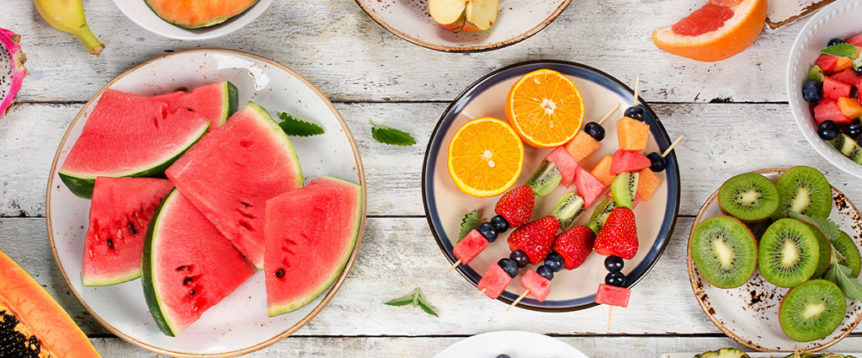One of summer’s (or any season’s) challenges can be drinking enough water to stay hydrated. This season, we suggest a different strategy: don’t. Instead of reaching for more and more water when the summer heat is on, balance your H2O intake by consuming hydrating foods.
Not only does the water from food “count” every bit as much as water you drink, but research suggests it may work even better to keep you hydrated. For example, a study conducted at the University of Aberdeen Medical School in Scotland found that athletes who ate cucumbers and watermelons after intense exercise rehydrated twice as well as those who only drank water, primarily because of the minerals the fruits contained.
Other nutrients contained in food—including vitamins A and C, folic acid, oleic acid and polyphenols—can also help our cells better retain water, keeping you hydrated longer, asserts dermatologist and author Howard Murad. And a German study published in the American Journal of Clinical Nutrition reported that children who ate more fruits and vegetables—which are anywhere from 80 to 98 percent water, in terms of the food’s total weight—stayed significantly more hydrated than those who ate fewer.
Fruits and veggies are the best hydration sources, but even most of the meat and some of the grains we eat are more than 50 percent water, in terms of the food’s total weight. For example, cooked chicken and beef are 60 to 65 percent water (the leaner the cut the more water, because protein contains water but fat doesn’t), and seafood ranges from 55 to 86 percent, depending on the kind and how it’s prepared. Cooked rice is 60 to 68 percent water, depending on the variety and the cooking method. Baked and highly processed foods tend to contain less than 50 percent water, so as a rule, the fresher the better.
10 Hydration Superstars
Go heavy on these hydrating, raw fruits and veggies this summer, which also contain nutrients to help you better retain the water they provide.
– Cucumbers – 96 percent water
– Iceberg Lettuce – 96 percent water
– Zucchini – 95 percent water
– Celery – 95 percent water
– Radishes – 95 percent water
– Tomato – 94 percent water
– Green cabbage – 93 percent water
– Watermelon – 92 percent water
– Strawberries – 92 percent water
– Bell Peppers – 92 percent water
How Much is Enough?
The National Academies of Sciences, Engineering and Medicine determined that an adequate daily fluid intake is about 11.5 cups for women, about 15.5 cups for men. About 20 percent of daily fluid intake comes from food and the rest from drinks.
In general, thirst should be your guide for water consumption, according to the Food and Nutrition Board, which sets the nation’s Dietary Reference Intakes (DRIs). The board doesn’t outline exact requirements for water intake, but they suggest, on average, 91 ounces of water for women daily—from beverages and food—and 125 for men.
See also Fight Inflammation with Water

